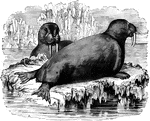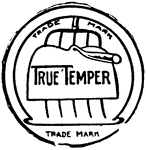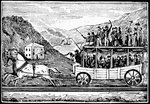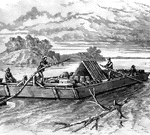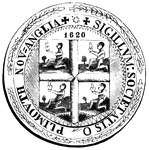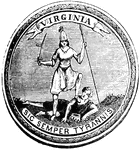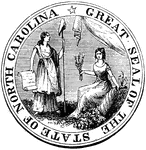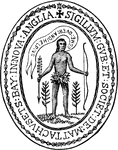
Paducah, Kentucky
"View of the town of Paducah, Ky., at the confluence of the rivers Ohio and Tennessee, the Northern…

General George W. Morgan
"General Morgan, born in Washington County, Pa., September 20th, 1820, died at Old Point Comfort, Va.,…

Common Seal
"The ground-color of the hair or skin, when this animal is alive and dry, is pale whitish-gray, with…
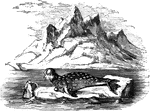
Hooded Seal
"Also called the Crested Seal, remarkable for possessing, about two inches from te extremity of the…
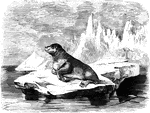
Sea Bear
"It is the size of a large bear; girth at the sholder, five feet, near the tail, twenty inches; fur…
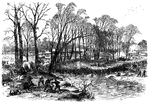
Battle of Stone River
"Battle of Stone River, Tenn. The decisive charge of General Negley's division across the river- the…

Battle of Stone River
"Battle of Stone River, Tenn. Decisive charge and capture of Byrne's Confederate battery by the Seventy-eighth…

Fort Hindman
"The investment of Fort Hindman, Arkansas Post, Ark., by the Federal troops under General McClernand,…
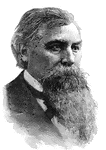
General Jeremiah M. Rusk
"General Rusk, born in Morgan County, Ohio, June 17th, 1830; died in 1894. He divided his time between…
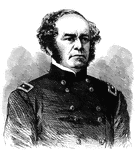
General Henry W. Benham
"General Benham, born in Connecticut in 1817, died in New York June 1st, 1884, was graduated from the…

Battle of Grand Coteau
"Battle of Grand Coteau, La., November 3rd, furious attack on the Sixtieth Indiana, Colonel Owen. On…
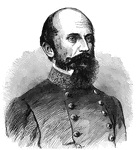
General John H. Morgan
"General Morgan, born in Huntsville, Ala., June 1st, 1826, died near Greeneville, Tenn., September 4th,…
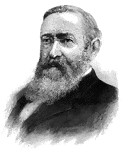
General Benjamin Harrison
"General Harrison, twenty-third President of the United States, was born at North Bend, Ohio, August…
!["Siege of Petersburg. The [African American] infantry bringing in captured guns and cheers of the Ohio troops. When the [African American] troops found themselves within the works of the enemy no words could paint their delight. Numbers of them kissed the guns they had captured with extravagant satisfaction, and a feverish anxiety was minfested to get ahead and charge some more of the Confederate works. A number of the [African American] troops were wounded and a few killed in the first charge. A large crowd congregated, with looks of unutterable admiration, about Sergeant Richardson and Corporal Wobey, of the Twenty-second United States [African American] regiment, who had carried the colors of their regiment and been the first men in the works. Our artist gives a sketch of this gallant action."— Frank Leslie, 1896](https://etc.usf.edu/clipart/11800/11801/petersburg_11801_mth.gif)
Siege of Petersburg
"Siege of Petersburg. The [African American] infantry bringing in captured guns and cheers of the Ohio…
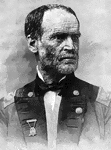
Lieutenant General William Tecumseh Sherman
"General Sherman, born in Lancaster, Ohio, February 8th, 1820; died in New York city, February 14th,…

Bealington
"Engagement at Bealington, Va., between Ohio and Indiana regiments and a detachment of Georgia troops.…

Sixteenth Regiment
"The Sixteenth Regiment, Ohio Volunteers, under Colonel Irwine, crossing the tray run viaduct, near…

Battle of Belmont
"Battle of Belmont, Mo., opposite Columbus, Ky, November 7th, 1861- Federal forces commanded by U. S.…

General James B. McPherson
"General McPherson, born in Sandusky, Ohio, November 14th, 1828, died near Atlanta, Ga., July 22nd,…

Alleghany hell-bender
"It is one to two feet long, dark slate color, feeds on worms, crawfish, fishes, and aquatic reptiles.…

Plaice
"Weighing six to twelve pounds; it feeds on mollusca, crustacea, and young fish; inhabits sandy banks…

Penn's seal and signature
"Penn's Seal and Signature. This is a representation of the seal and signature of William Penn attached…
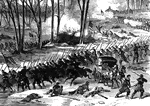
Battle of Stone River
"Battle of Stone River, Tenn. The decisive charge of General Negley's division across the river- the…

Battle of Stone River
"Battle of Stone River, Tenn. The decisive charge of General Negley's division across the river- the…

Battle of Stone River
"Battle of Stone River, Tenn. The decisive charge of General Negley's division across the river- the…

Attack at Harrisonburg
"Gallant attack by 150 of the Pennsylvania Bucktails, led by Colonel Kane, upon a portion of General…
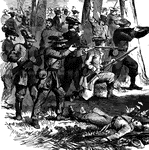
Attack at Harrisonburg
"Gallant attack by 150 of the Pennsylvania Bucktails, led by Colonel Kane, upon a portion of General…
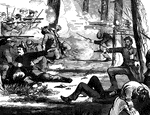
Attack at Harrisonburg
"Gallant attack by 150 of the Pennsylvania Bucktails, led by Colonel Kane, upon a portion of General…
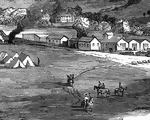
Village of Clarksburg
"Village of Clarksburg, Western Virginia, headquarters of General Rosecrans. Clarksburg, a post village,…
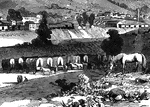
Village of Clarksburg
"Village of Clarksburg, Western Virginia, headquarters of General Rosecrans. Clarksburg, a post village,…
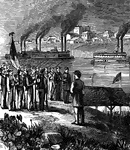
Bellaire
"Bellaire, O.- Steamboats conveying troops and munitions of war for the Federal forces on the Great…
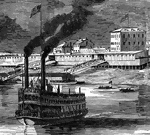
Bellaire
"Bellaire, O.- Steamboats conveying troops and munitions of war for the Federal forces on the Great…

Bellaire
"Bellaire, O.- Steamboats conveying troops and munitions of war for the Federal forces on the Great…
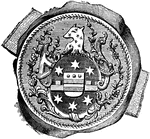
William Tryon Seal
"Seal and signature of Tryon. William Tryon was a native of Ireland, and was educated to the profession…

William the Conqueror
"William the Conqueror (1066-1087), as represented on his seal. Although William really ruled 'as king…

Passenger Train
"The first passenger locomotive built in the United States. A year after the Enterprise sailed for India,…
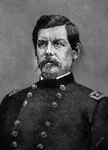
George B. McClellan
"George Brinton McClellan was born at Philadelphia, December 3, 1826. He was for two years a student…
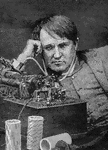
Thomas Alva Edison
"Thomas Alva Edison was born at Milan, Ohio, February 11, 1847, but the family soon after moved to Port…
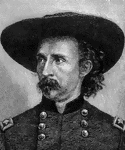
George Armstrong Custer
"George Armstrong Custer, a brilliant cavalry officer, was born at New Rumley, Ohio, December 5, 1839.…
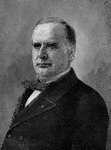
William McKinley
"In the general election of 1896, the principal question at issue was the financial policy of the country.…
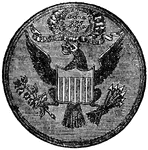
Eagle on Seal of United States
"The Eagle is a gold coin of the United States, value $10; half-eagle, $5; quarter-eagle, $2.50, double…

Badge of the Army of the Cumberland
"The Army of the Ohio was a division of the Federal army in the Civil War; organized in 1861-1862 by…

Porcelain Marks
"Porcelain is a fictile material intermediate between glass and pottery, being formed of two substances,…
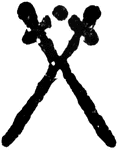
Porcelain Marks
"Porcelain is a fictile material intermediate between glass and pottery, being formed of two substances,…

Porcelain Marks
"Porcelain is a fictile material intermediate between glass and pottery, being formed of two substances,…
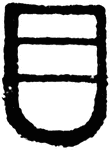
Porcelain Marks
"Porcelain is a fictile material intermediate between glass and pottery, being formed of two substances,…
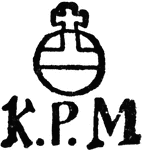
Porcelain Marks
"Porcelain is a fictile material intermediate between glass and pottery, being formed of two substances,…
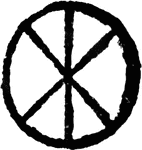
Porcelain Marks
"Porcelain is a fictile material intermediate between glass and pottery, being formed of two substances,…

Porcelain Marks
"Porcelain is a fictile material intermediate between glass and pottery, being formed of two substances,…

Porcelain Marks
"Porcelain is a fictile material intermediate between glass and pottery, being formed of two substances,…
